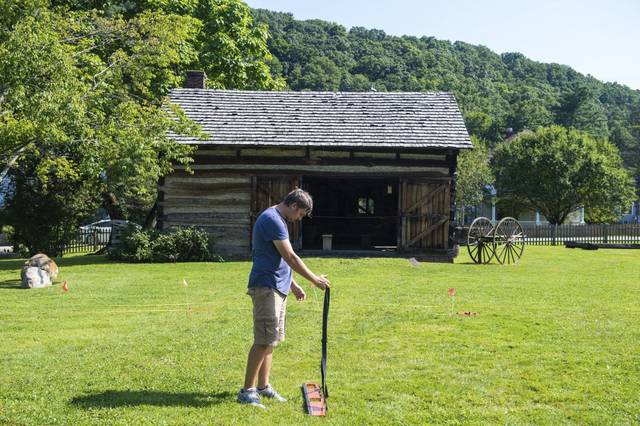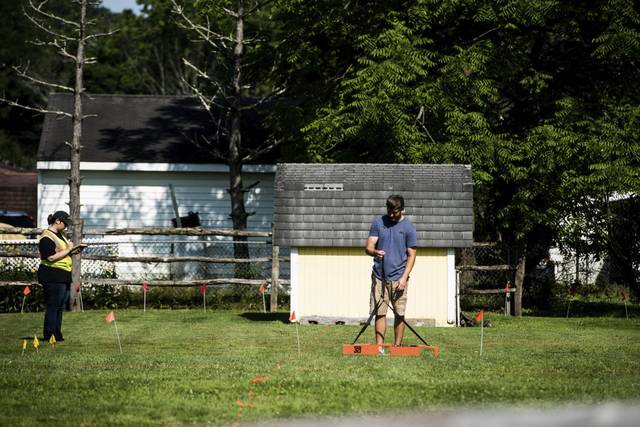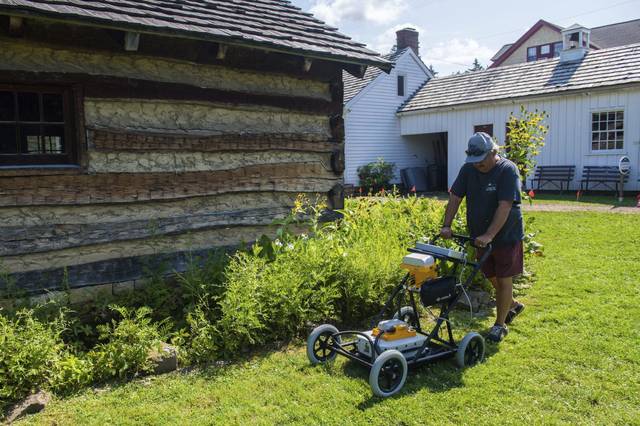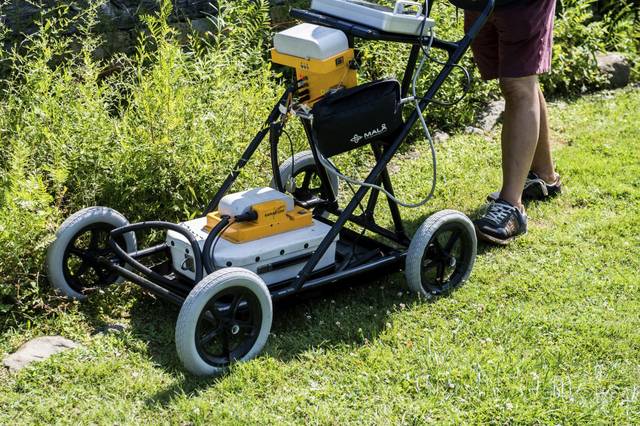Underground scans help peel back history at Laughlintown's Compass Inn
The Ligonier Valley Historical Society is taking a downward glance in order to look back in time at its historic Compass Inn Museum in Ligonier Township.
A team from local Markosky Engineering visited last week with devices to scan below the ground beside and behind the restored 1799 stagecoach stop along Route 30 in Laughlintown. Guided by Frank Vento, a geoarchaeologist and professor emeritus at Clarion University, and Annie Margenin, a staff archaeologist at Mercyhurst University, the crew members looked for subsurface anomalies that could provide clues to the locations of past structures. The Markosky crew plans to return to the inn in August.
The historical society hopes to verify the correct location of reconstructed outbuildings — including barns, a cookhouse and a blacksmith shop — and find other potential points of archaeological interest, Executive Director Theresa Gay Rohall explained.
“This is all in anticipation of finding some additional parts of sites — buildings, maybe privies, maybe wells — that were part of the original Compass Inn site, to help us better tell the stories of those who lived and worked here, and the travelers,” Rohall said. That includes a building that reportedly once stood on a rear corner of the property.
“We want to understand the site better than we’ve ever understood it, so that we can tell the story of the site and not necessarily just tell the story of objects within our site,” she said.
During a first pass with a ground-penetrating radar device, which examined the soil to a depth of about 2.5 feet, Vento detected an area of less dense ground behind the cookhouse that could warrant further study.
“We look for any kind of variation in the image,” Vento said of the radar readout. “If there was a well, we should see a clear indication of a well going into the bedrock.”
Jessica Schumer, Markosky’s archaeology group leader, said the radar data will be correlated with readings from a magnetometer and a device that measures electrical resistivity in the ground, to complete a geophysical survey of the property at the inn and an adjacent parcel where the society has its headquarters.
“When you pull them together, they can be useful to identify areas that might be archaeological hot spots,” Schumer said of the readings. That information will be compared with historical records of the property to pinpoint likely locations for archaeological test digs next month, she said.
The professional study will accurately document the location of any artifacts that are uncovered, Rohall said. She noted amateur archaeologists are not permitted to use metal detectors on the society grounds.
She said the geophysical survey is part of a two-year project, “Transforming for the Future,” that is to be completed by 2022, when Compass Inn will mark its 50th year operating as a museum.
The $425,000 project also involves developing a plan for unifying the properties of the society’s Laughlintown campus and, with Markosky’s assistance, completing storm water management improvements.
The inn is among areas of the township that have been plagued with flooding issues over the past few years, Rohall said. A basement furnace had to be replaced, but no artifacts have been damaged, she said.
The project is being supported by grants from the Allegheny Foundation and the Rita M. McGinley Foundation.
Jeff Himler is a TribLive reporter covering Greater Latrobe, Ligonier Valley, Mt. Pleasant Area and Derry Area school districts and their communities. He also reports on transportation issues. A journalist for more than three decades, he enjoys delving into local history. He can be reached at jhimler@triblive.com.
Remove the ads from your TribLIVE reading experience but still support the journalists who create the content with TribLIVE Ad-Free.




